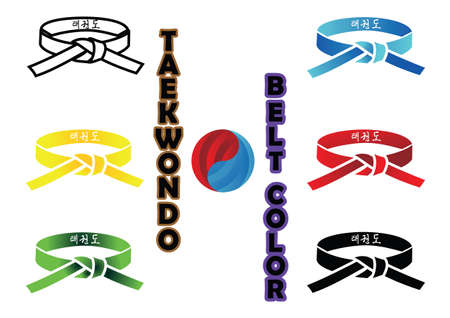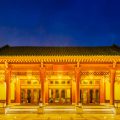1. The Origins of Feng Shui: More Than Just Decor
When most people in the United States think about Feng Shui, Hollywood movies often come to mind. These films usually show Feng Shui as a simple way to arrange your furniture or decorate a home with lucky objects. But the real roots of Feng Shui go much deeper than what you see on screen.
Feng Shui’s Ancient Beginnings
Feng Shui is an ancient Chinese practice that dates back thousands of years. Its name literally means “wind” (Feng) and “water” (Shui), two natural elements that were believed to shape the land and influence human life. Originally, Feng Shui wasn’t about picking out throw pillows or where to put your couch. It was a complex system used to choose locations for important buildings, tombs, and even entire cities, based on the natural environment.
Hollywood vs. Reality: What’s the Difference?
| Hollywood Portrayal | Traditional Feng Shui |
|---|---|
| Focuses on interior design and lucky charms | Focuses on harmony with nature and energy flow (Qi) |
| Emphasizes quick fixes like moving furniture | Considers landforms, directions, and long-term well-being |
| Often uses modern decor trends labeled as “Feng Shui” | Uses ancient principles, compass readings, and environmental analysis |
The True Purpose of Feng Shui
The heart of Feng Shui is about creating balance between humans and their surroundings. It’s not just about making your home look good; it’s about improving health, happiness, and prosperity by understanding how energy moves through spaces. Traditional practitioners analyze everything from sunlight and wind patterns to the shapes of nearby mountains or bodies of water.
This ancient wisdom can still be helpful today, but it goes far beyond the Hollywood version. Understanding these original purposes helps us see why Feng Shui is more than just a trend—it’s a thoughtful way to connect our lives with the world around us.
Hollywood vs. Reality: Common Feng Shui Myths
How Movies and TV Shape Our Understanding
When most Americans think of Feng Shui, the images that come to mind often come straight from Hollywood movies and popular TV shows. Unfortunately, these portrayals are rarely accurate. Instead, they mix ancient Chinese wisdom with fantasy, making it hard to tell whats real and whats just for entertainment.
Popular Feng Shui Myths from Hollywood
| Hollywood Myth | The Reality |
|---|---|
| Feng Shui is a type of magic that brings instant good luck. | Feng Shui is not magic. It’s a traditional practice focused on harmonizing your environment to support well-being. Results come from thoughtful design, not supernatural forces. |
| Placing certain objects (like lucky cats or coins) guarantees wealth and success. | While some symbols are used in Feng Shui, true practice goes beyond objects. Its about arranging your space for balance and positive energy flow, not relying on lucky charms. |
| Feng Shui is only about home decor and furniture placement. | Feng Shui considers the bigger picture: how energy (Qi) moves through your entire living or work environment, including lighting, colors, and even your daily habits. |
| Feng Shui is an outdated superstition with no relevance today. | Many modern architects and designers use Feng Shui principles because they help create spaces that feel comfortable and inviting—no superstition required! |
What Feng Shui Really Represents
Unlike what you see in movies, Feng Shui isn’t about casting spells or chasing after miracles. At its core, it’s about creating harmony between people and their surroundings. Think of it as environmental psychology with roots in Chinese culture—helping you feel more at ease, productive, and balanced in your everyday life.
![]()
3. Symbolism and Science: What Feng Shui Actually Involves
When most Americans think of Feng Shui, they often picture mystical rituals or magical symbols thanks to how Hollywood movies and TV shows portray it. But the true practice of Feng Shui is both practical and rooted in real principles that go far beyond what we see on screen.
Energy Flow, Balance, and Harmony
At its core, Feng Shui is about optimizing the flow of energy—called “Qi” (pronounced “chee”)—through spaces where we live and work. It’s not about casting spells or using supernatural powers. Instead, it focuses on creating environments that support our well-being by balancing elements and arranging furniture to promote comfort and positivity.
Main Principles of Feng Shui vs. Hollywood Portrayals
| Feng Shui Principle | Hollywood Misconception |
|---|---|
| Arrangement of furniture for better energy flow | Using mysterious artifacts or charms for luck |
| Balancing five natural elements: wood, fire, earth, metal, water | Focusing only on lucky colors or numbers |
| Maximizing natural light and ventilation | Dark rooms with secretive rituals |
| Creating harmony between people and environment | Solving all problems instantly with a single object |
The Role of Symbolism in Feng Shui
While symbolism does play a role in traditional Feng Shui (like placing a plant for growth or a mirror to reflect positive energy), it’s not about superstition. These symbols serve as reminders to pay attention to certain aspects of life—such as health, relationships, or career. The key is thoughtful placement and intention, not magic.
A Practical Example: The Front Door
Many Hollywood movies show characters hanging wind chimes or red tassels by the front door for instant good fortune. In reality, Feng Shui experts recommend keeping the entrance clean and inviting, ensuring it opens freely, and using welcoming colors to encourage good energy into your home—not just relying on lucky objects.
Is There Science Behind Feng Shui?
While some concepts may seem spiritual, many Feng Shui practices align with modern design psychology. For example, arranging furniture so you can see the door from where you sit can make you feel safer and more comfortable—a principle supported by environmental psychology studies.
So next time you watch a movie scene filled with mystical smoke and dramatic chants in the name of Feng Shui, remember: the real power of this ancient art lies in creating balanced, harmonious spaces that help us thrive in everyday American life.
4. Feng Shui in the American Home: Practical Application
Hollywood often shows Feng Shui as a mysterious or magical process, but in reality, it’s about creating harmony and comfort in your living space. Authentic Feng Shui is rooted in respect for energy flow (Qi), practicality, and cultural understanding. Here are some meaningful and culturally sensitive ways Americans can apply real Feng Shui principles at home:
Understanding Qi: The Flow of Energy
In Feng Shui, Qi is the life force that flows through your environment. The goal is to encourage smooth and balanced energy movement so that your home feels inviting and peaceful. This doesn’t mean you need to buy exotic objects or follow strict rules from movies. Instead, focus on how spaces make you feel and function.
Simple Ways to Boost Qi at Home
| Feng Shui Principle | Practical Application for American Homes |
|---|---|
| Clear Clutter | Keep entryways, hallways, and common areas tidy. Donate unused items regularly to keep energy flowing. |
| Use Natural Light | Open curtains during the day. Place mirrors thoughtfully to reflect light without causing glare or discomfort. |
| Add Living Plants | Choose easy-to-care-for plants like snake plants or pothos. Avoid spiky cacti in main gathering areas for softer energy. |
| Create Balance | Mix different textures (soft and hard), colors (warm and cool), and shapes throughout your rooms for a harmonious look. |
| Mind the Front Door | The front door is where energy enters your home. Make sure it opens easily, is well-lit, and feels welcoming—no Hollywood-style dragons needed! |
Culturally Respectful Adaptations
You don’t have to adopt elements that feel foreign or out of place. Authentic Feng Shui adapts well to American lifestyles by emphasizing comfort, safety, and personal taste. For example, instead of using traditional Chinese symbols you don’t connect with, display art or family photos that bring you joy. Think about how rooms support your daily routines—does your bedroom promote good sleep? Is your workspace energizing?
Tuning Feng Shui to Your Life
- Personalize Your Space: Choose décor that reflects who you are while supporting calmness and connection.
- Simplify: Focus on one area at a time—small changes can have a big impact.
- Be Mindful: Notice how moving furniture or adding a plant changes the mood of a room before making big investments.
- No Superstitions Required: You don’t need to believe in magic; just pay attention to what makes your home feel good for you and your family.
A Real-Life Example: The Living Room Refresh
An American family wanted more togetherness time in their living room after watching a Hollywood movie about Feng Shui. Instead of buying lucky charms or red lanterns, they rearranged their furniture so everyone could face each other comfortably, added a cozy rug for warmth, kept windows clear for sunlight, and placed fresh flowers on the coffee table. The result? More conversation and laughter—real Feng Shui at work!
5. Respect and Cultural Appreciation: Avoiding Cultural Clichés
When practicing Feng Shui in the United States, it’s important to recognize its deep cultural roots and avoid the common stereotypes that Hollywood often promotes. Movies sometimes show Feng Shui as just moving furniture or placing lucky charms, but true Feng Shui is about harmony, balance, and respect for ancient wisdom. To help you respectfully incorporate Feng Shui into your space without falling into cultural clichés, here are some simple guidelines:
Understanding Authentic Feng Shui vs. Hollywood Myths
| Hollywood Misconception | Authentic Practice |
|---|---|
| Feng Shui is just about interior decoration | Feng Shui is a holistic system considering energy flow, environment, and personal well-being |
| Using only Chinese symbols and objects brings good luck | The focus is on balance, intention, and placement based on unique spaces—not just symbols |
| Anyone can instantly become an expert by watching movies or TV shows | True understanding comes from learning about Feng Shui’s history and principles with respect for its origins |
Tips for Practicing Feng Shui Respectfully in the U.S.
- Acknowledge the Origins: Remember that Feng Shui is rooted in Chinese culture. Take time to learn about its history before making changes in your home.
- Avoid Stereotypes: Don’t limit Feng Shui to “fortune cats,” dragons, or other pop-culture icons. Focus on creating harmony and flow.
- Ask Questions: If working with a consultant, choose someone who respects both the tradition and your personal style—don’t be afraid to ask about their background and approach.
- Blend Thoughtfully: You can adapt Feng Shui principles to fit American homes without forcing Asian décor if it doesn’t match your taste. Balance is more important than specific items.
- Respectful Language: Use terms like “energy flow,” “balance,” and “well-being” rather than treating Feng Shui as superstition or magic.
Common American Adaptations That Stay True to Feng Shui Principles
| American Setting | Respectful Application of Feng Shui |
|---|---|
| Suburban House Layouts | Focus on clear pathways, natural light, and open spaces rather than filling rooms with traditional Chinese artifacts |
| Modern Apartments | Create zones of calm using plants, mirrors for light reflection, and mindful furniture arrangement instead of relying solely on symbolism |
| Home Offices | Prioritize desk placement for focus and productivity while keeping the space clutter-free to encourage positive energy flow (Qi) |
Key Takeaway:
You don’t need to turn your home into a movie set to practice real Feng Shui. By learning its true meaning and avoiding Hollywood-inspired clichés, you’ll create a space that honors both your own style and the tradition behind this ancient art.


